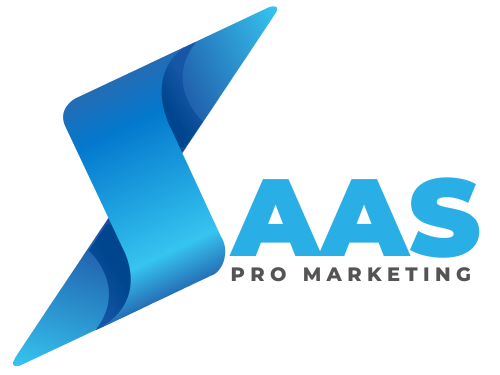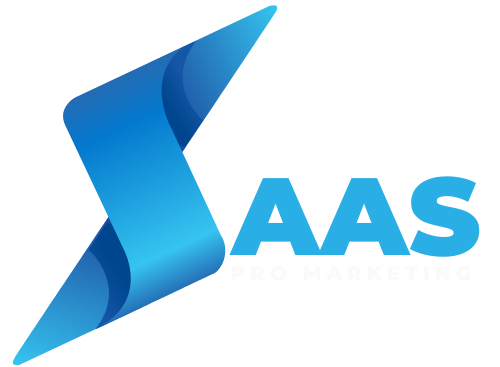SaaS marketing is all about selling software that people use online. Instead of buying the software once, users pay a fee regularly to keep using it. Companies figure out who might want to use their software and what problems they have. Then, they create helpful content like blogs and videos to tell people about their software and how it can solve their problems. They also try to be easy to find online, so they use things like Google Ads to show up when people search for similar software. Many companies use SaaS Marketing Strategies to let people try their software for free before they decide to buy it. This helps people see if the software is right for them. Once people start using the software, the company makes sure they’re happy. They might offer good customer support and keep improving the software based on what customers need.

Characteristics:
There are several characteristics of SaaS Marketing Strategies, some of which are discussed below.
Subscription Model:
SaaS marketing is when you sell software on a subscription basis. Instead of paying for the software once, customers pay a regular fee to keep using it. This helps businesses plan their finances better because they know how much money they’ll make each month. It also makes it easier to keep customers happy and coming back because they’re already paying for the service regularly.
Trial and Premium Options:
Lots of SaaS companies let you try their software for free before you decide to buy it. They might give you a limited version for free or let you use it for a short time without paying. This helps you see if the software is good and if it’s worth your money. It also makes you feel more comfortable and trusting towards the company. Plus, when people like what they try, they’re more likely to become paying customers.
Customer-Centric Approach:
Good SaaS marketing focuses on knowing what customers want and what problems they have. This helps make the product better and ensures that the SaaS marketing strategies are helpful, too. When the company listens to what customers need, it keeps them happy and wanting to stick around.
Data-Driven Decision Making:
SaaS marketers use data to assess the effectiveness of their marketing. They look at things like the cost of acquiring new customers, the number of customers lost, and the value of each customer over time. This information helps them improve their marketing over time.
Content Creation:
SaaS companies create helpful content to teach people about their software. This can be blogs, videos, or webinars that explain what the software does and how it can help. By sharing SaaS Marketing Strategies, they become leaders in their field and naturally attract more visitors to their websites.
There are several SaaS Marketing Strategies available, which are discussed below.
1. Create Marketing Plan:
First, figure out what you want to achieve with your marketing, like how much money you want to make and how many new customers you want to get and keep. Then, take a close look at your competitors and what makes your software different from theirs.
Next, decide which ways of reaching people will work best for you for SaaS Marketing Strategies. You might focus on a few, like social media or email, but it’s good to use a mix of different ways people find out about things, like SEO or being in online communities.
After that, make a plan for how you’ll talk to people at every step, from first hearing about your software to becoming a customer and sticking around.
2. Define Customer Profile:
Knowing your ideal customers helps you understand their biggest problems. This knowledge helps you create products and set prices that match their needs, as well as make effective marketing plans.
When you focus your SaaS Marketing Strategies on these ideal customers, you can reach more of them, get them to start using your product, keep them around longer, and make more money from them.
To do this, first, create different profiles for the kinds of people who might use your product. Use real data and research to determine things like their age, where they live, and what their jobs are.
Then, find out what problems these people have and how your product can solve them. Figure out how they like to learn about things and where they spend time online. This helps you get a better idea of who your customers are and how to reach them.
3. Use SEO:
SEO makes your website and software more visible on search engines like Google. It’s important for your SaaS Marketing Strategies.
There are two types of SEO: on-page and off-page.
On-page SEO involves things like using the right keywords, creating good content, making your website easy to use, and having good titles.
Off-page SEO is about getting other websites to link to yours, being active on social media, working with people who have a lot of followers to promote your product, and having a plan to share your content.
SEO helps you create content that search engines like, thereby boosting your website’s visibility in search results. This in turn helps more people find out about and use your SaaS product.
4. Referral Marketing
Research shows that people trust recommendations from friends, but not many customers actually refer businesses even though they’re willing to. This means SaaS businesses miss out on using referral marketing effectively.
One way to get more referrals is to give rewards to customers who refer others, like discounts or free stuff. But since every business is different, try different ways to get referrals and see what works best for your customers.
Once you find what works, make a good referral program to grow your SaaS business.
5. Social Media Presence
Social media is a great way for SaaS companies to show off what they do, get more people interested, and grow faster. It’s not just for B2C companies anymore – even B2B ones use it to connect with customers, show off their brand, and explain why their product is great.
To do it right, start by setting goals, knowing who your ideal customers are, and picking the right social media platforms. For example, LinkedIn and Twitter are good for B2B, while Facebook and Instagram work well for B2C.
Before you start posting as SaaS Marketing Strategies, make sure your profiles look good and have the right info. Then, plan out what you’ll post and when. Try different types of posts, like videos or webinars, to show off what your product can do.
6. Implement e-mail Marketing
Email marketing is a great way for SaaS Marketing Strategies to get new customers. It means sending personalized emails to different groups of people based on what they like or do.
You can use special software to send emails automatically based on what people do. For example, if someone signs up because a friend told them about your product, you can send them a series of emails to help them get started and give them rewards for using the product.
SaaS companies like email marketing because it lets them send helpful emails to a large number of people without doing everything manually. It’s good for getting new customers, keeping the ones you have, and getting people to use your product more.
FAQ’s
What is SaaS marketing?
SaaS marketing involves selling software online through subscription-based models, in which users pay a regular fee instead of buying the software outright.
Why is content marketing important for SaaS companies?
Content marketing helps SaaS companies educate potential customers about their software’s features and benefits, positioning them as industry leaders and attracting organic traffic to their websites.
What are some characteristics of SaaS marketing strategies?
Some characteristics include subscription-based pricing models, offering free trials or premium versions, focusing on customer needs, using data-driven decision-making, and prioritizing content marketing and education.
Why is email marketing effective for SaaS companies?
Email marketing allows SaaS companies to send personalized messages to different customer segments, automate communication based on user actions, and nurture leads. It’s a cost-effective way to acquire and retain customers.









